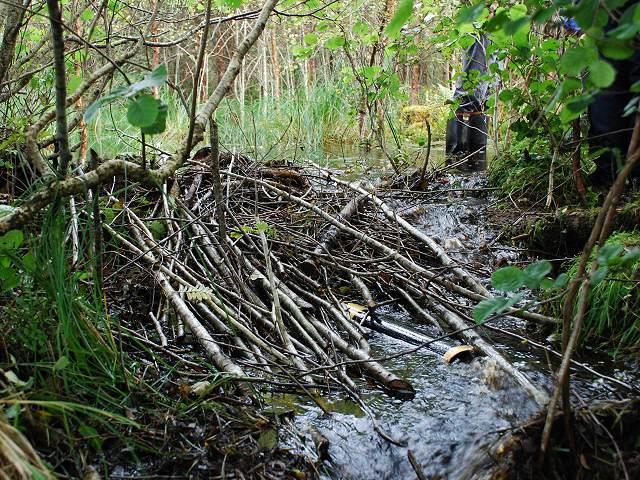BIG LAKE, Wash. — Nearly five months after a beaver dam breach covered their properties in mud and water, residents of Big Lake have started working to find a fix to the troublesome dam.
About 20 residents met Wednesday with state and county representatives to begin to talk through the barriers to keeping such an incident from happening again.
The Oct. 29 breach in the dam, on a stream in Coots Cove on the west side of the lake, was responsible for water and mud covering roads and damaging at least 14 homes.
“This was the most dirt and water (we’ve seen),” said Skagit County Commissioner Peter Browning, who attended the meeting. “I think it scared people.”
Tom Dodd, whose family has lived next to the stream for nearly 100 years, is the one whose property takes the brunt of the dam breaches.
He said the water level of the stream at the dam has been rising since 1989, and now residents see the stream flood about every other year.
When that happens, Dodd’s 3-acre property absorbs most of the water, he said. He spent $30,000 cleaning up after the most recent incident.
“Someone has to be responsible for managing the watershed,” he said.
The land where the dam is located is privately owned, and is barred from development because of an agreement between the owner and the Skagit Land Trust.
However, Kari Odden, a conservation project manager with the Skagit Land Trust, said the agreement would allow for a fix.

Elyssa Ker, who represents the nonprofit Beavers Northwest, said her organization is willing to do the work on the dam — as long as the residents can fund it.
The dam in question is old and unusually large, she said. After seeing it earlier in the day Wednesday, she said there’s evidence of many earlier breaches and patches.
It’s also up on a steep hillside, meaning any kind of breach sends a “rush of everything coming down,” Ker said.
Those in her line of work call these hazard dams, she said. They’re difficult to repair, and no one likes to work on them because of liability concerns.
Ker said a fix is possible, and would likely involve something of a drain or controlled spillway being put in to reduce the amount of water hitting the dam.
However, she said Beavers Northwest would need permission from the landowner before it can do the work.
The property owner is in a long-term care facility, but his family has the authority to allow a fix to be made, Browning said.
The state Department of Fish and Wildlife would also need to approve the design of the fix.
While the permit is free, materials could be costly, Ker said.
One potential for funding is forming a watershed management district — a local taxing authority that would collect from residents to fund the project, and may help with finding grants.
Browning said there’s no way for the county to contribute funding.
He suggested the group meet again in about a month, and asked that residents reach out to the property owner and gather more information on a watershed management district.
He said it could take three or four of these meetings before progress is made.









